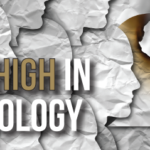(Reuters Health)—Massage is better than nothing for pain relief, according to a new review. The therapy may also be an acceptable choice for people considering other options, such as acupuncture and physical therapy.
“It should be considered at least for musculoskeletal pain as a viable option in the mix of pain management techniques in these areas,” says Dr. Wayne Jonas, president and CEO of the Samueli Institute in Alexandria, Va.
“We couldn’t say it’s better than other kinds of therapies, but it did look like it was better than doing nothing to a considerable degree,” he says.
The new review was funded by the Massage Therapy Foundation and conducted by the Evidence for Massage Therapy Working Group, which was led by the Samueli Institute.
Massage manipulates soft tissue to alleviate pain, and some people believe the relaxation tied to the therapy may help other aspects of the person’s health like psychology, the researchers note in the journal Pain Medicine, May 10.
For the new study, they searched databases of medical studies to find those testing massage for the treatment of pain. They included 60 high-quality studies and seven low-quality studies.
All of the studies were published between 1999 and 2013 and tested massage for muscle and bone pain, headaches, deep internal pain, chronic pain, such as fibromyalgia, and spinal cord pain.
Three of four studies involving a total of 245 people with muscle and bone pain showed that, compared with no therapy, massage had a very large effect on pain, the researchers found.
The group was able to make a strong recommendation for massage therapy, compared with no treatment.
Thirty-four studies, with 3,557 participants, compared massage therapy with active treatments, such as acupuncture and physical therapy. Massage therapy provided some benefits compared with other options and was relatively safe. Although the quality of most studies was high or acceptable, the group only issued a weak recommendation for massage compared with other treatments.
Dr. Jonas says the evidence may change if a large high-quality study is done looking at massage therapy compared with other treatments.
Based on some of the studies, the group also weakly endorsed massage therapy for reducing anxiety and pain among pain patients.
Highlighting the current opiate addiction epidemic in the U.S., a group of researchers wrote in an accompanying editorial that massage therapy is a refreshing and low-risk option.
“Massage therapy will not remove the need for medications in pain management and it will not be an appropriate therapy for every pain patient, but it should be considered as a routine complementary (not alternative) part of an individualized, multimodal, and stepped care pain plan for pain management,” write the researchers, who were led by Chester Buckenmaier III, MD, of the Defense and Veterans Center for Integrative Pain Management in Rockville, Md.



